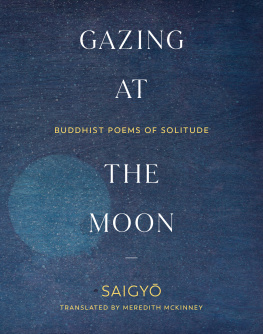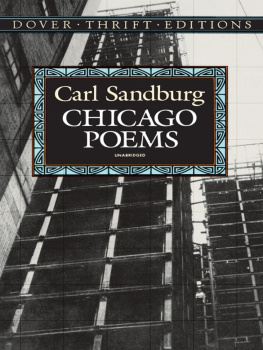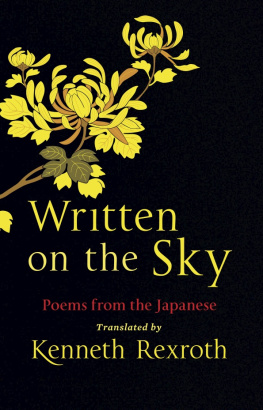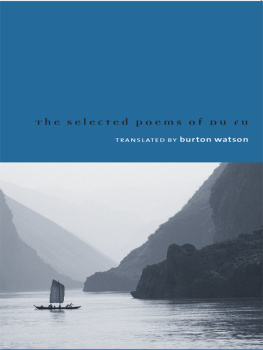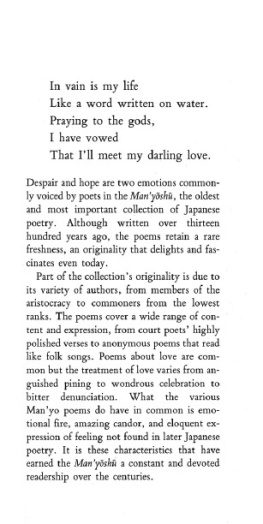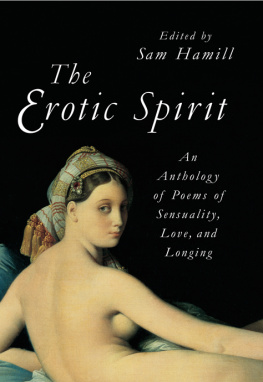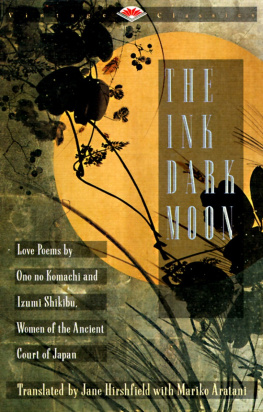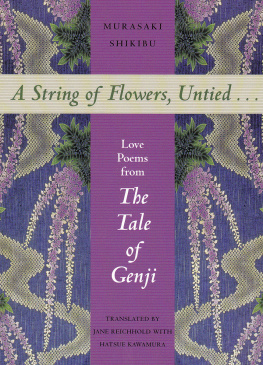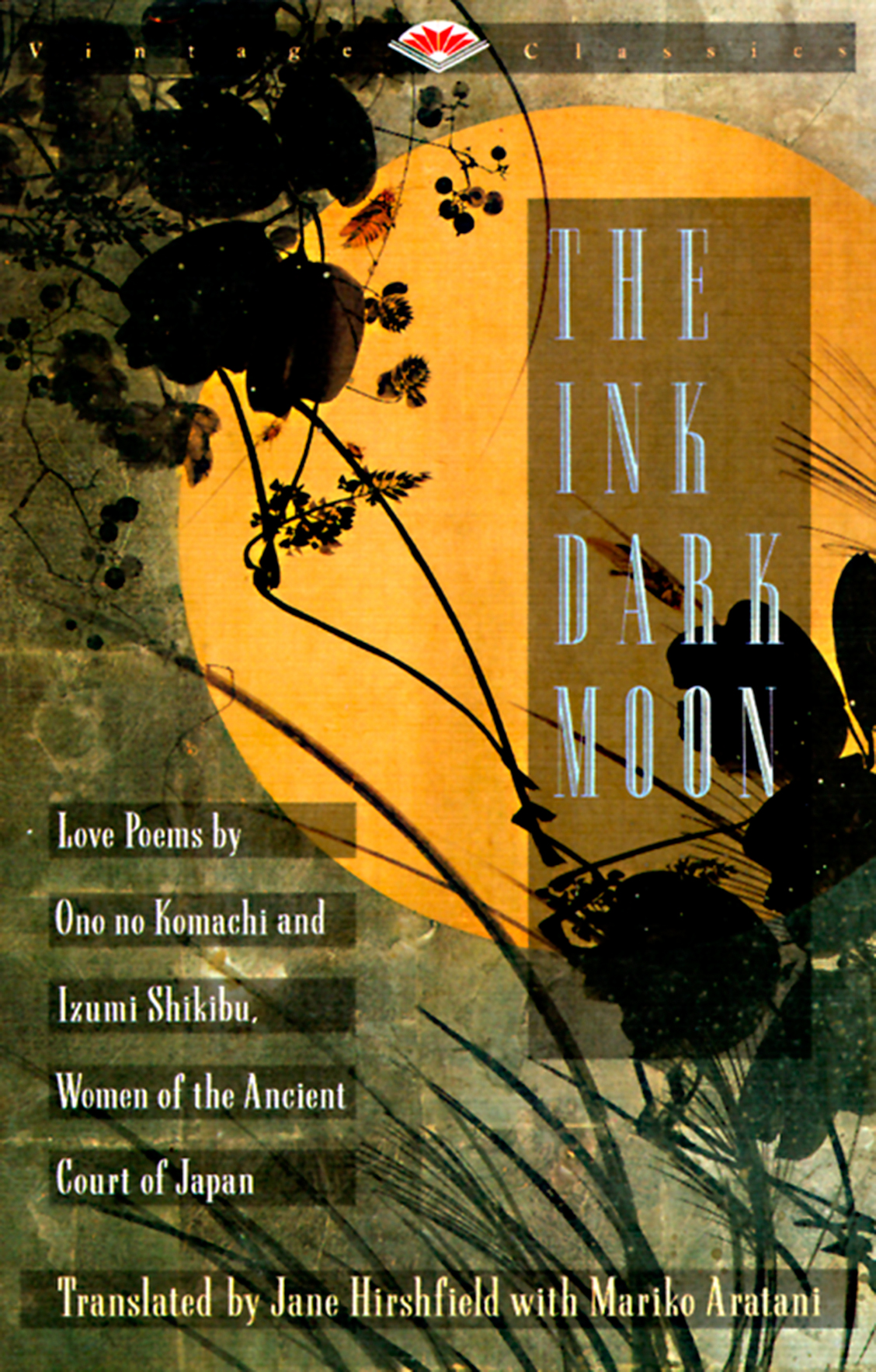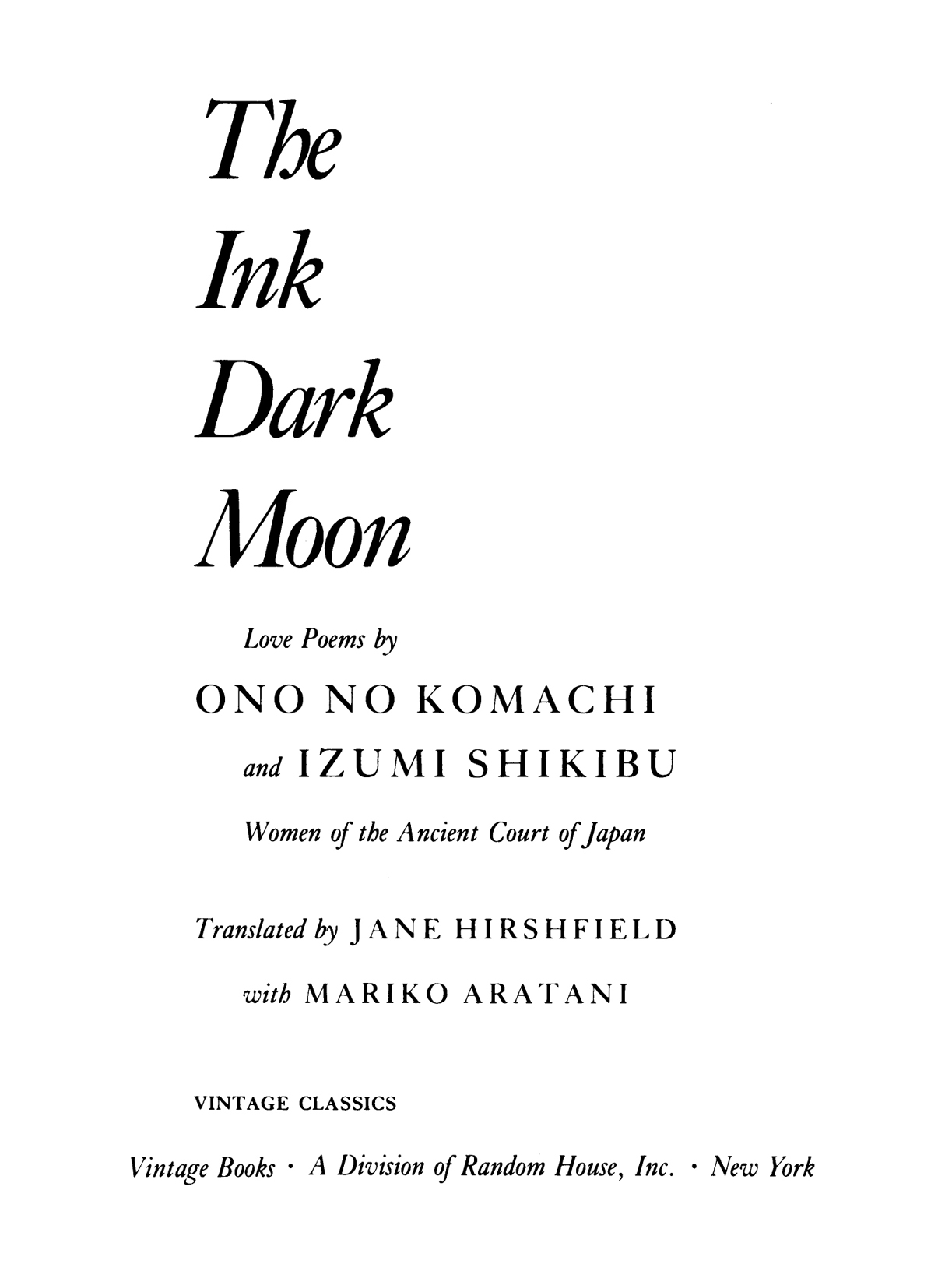F IRST V INTAGE C LASSICS E DITION , O CTOBER 1990
Copyright 1986, 1987, 1988, 1989, 1990 by Jane Hirshfield
All rights reserved under International and Pan-American Copyright Conventions.
Published in the United States by Vintage Books, a division of Random House, Inc., New York, and simultaneously in Canada by Random House of Canada Limited, Toronto.
Originally published, in different form, by Charles Scribners Sons in 1988.
Library of Congress Cataloging-in-Publication Data
The Ink dark moon: love poems by Ono no Komachi and Izumi Shikibu, women of the ancient court of Japan / translated by Jane Hirshfield with Mariko Aratani.
p. cm.
Translation of selected Japanese poems by women of the ancient court of Japan.
ISBN 0-679-72958-5
1. WakaWomen authorsTranslations into English. 2. Waka, EnglishTranslations from Japanese. 3. Love poetry, JapaneseWomen authorsTranslations into English. 4. Love poetry, EnglishTranslations from Japanese. 5. Japanese poetryHeian period, 7941185Translations into English. 6. English poetryTranslations from Japanese. I. Hirshfield, Jane, 1953. II. Ono No Komachi, 9th cent. Poems. English. Selections. 1990. III. Izumi Shikibu, b. 974? Poems. English. Selections. 1990.
PL758.825.L6I55 1990
895.6114080354dc20 90-50154
eBooks ISBN: 978-0-8041-5359-1
Poems from this book have previously appeared in The American Poetry Review, Ironwood, Northcoast View, and Yellow Silk.
Book design by Andrew Roberts
Calligraphy by Yasuko Fujita Donahue
Cover art Autumn Grasses by Shibata Zeshin. Detail of right half of 2-panel screen, ca. 1872-1891. Ink, lacquer and silver leaf on paper. 26 1/8" x 69"
Cover design by Susan Mitchell
v3.1
TRANSLATORS ACKNOWLEDGMENTS
We would like to thank Lily Pond, editor of Yellow Silk, who introduced us and published the first fruits of this project; Michael Katz, our agent and unofficial third partner; Charles Levine, for his early support and encouragement; Kaz Tanahashi, for his generosity in reviewing the appendix; and Luann Walther, our Vintage editor. Jane Hirshfield would also like to thank Karen Brazell, whose courses introduced her to the poets translated here, and the John Simon Guggenheim Memorial Foundation, for their support of her work during the year this project was begun.
Contents
Introduction
The two poets whose work is collected in The Ink Dark Moon are central figures in the only Golden Age in literary history in which women writers were the predominant geniuses: Japans Heian era, which lasted from 794 to 1185. Ono no Komachi (834??) served at the imperial court in the capital city of Heian-kyo (present-day Kyoto) during the first half century of its existence; her poetry, deeply subjective, passionate, and complex, helped to usher in a poetic age of personal expressiveness, technical excellence, and philosophical and emotional depth. Izumi Shikibu (974?1034?) wrote during the time of the court cultures greatest flowering; a woman committed to a life of both religious consciousness and erotic intensity, Shikibu explored her experience in language that is precise in observation, intimate, lyrical, and deeply moving. These two women, the first a pivotal figure who became legendary in Japanese literary history, the second Japans major woman poet, illuminated certain areas of human experience with a beauty, truthfulness, and compression unsurpassed in the literature of any other age. As do the words of Sappho, Catullus, and Dickinson, in whose company they belong, their brief poems serve as small but utterly clear windows into those concerns of heart and mind that persist unchanged from culture to culture and from millennium to millennium.
The aristocratic culture of the Heian court proved to be a uniquely auspicious environment for women writers for several reasons, but the foremost is the central role of the arts in the conduct of daily life. Aside from the unalterable circumstance of inherited family rank, successful display of aesthetic sensibility was the primary means of establishing personal distinction among members of the court, both male and female. The skills, subtle judgment, and taste demonstrated in the mixing of incense, the layering of patterned silk kimonos, musical performance, painting, dance, and above all the writing and recitation of poetry, figured greatly both in ones appeal as a prospective romantic partner and in ones prospects for official advancement. No significant experience was considered complete without its accompanying poem, and conversely, the desire to give an experience formal expression in poetry was itself the mark of the presence of deep emotion for an educated person.
Male writers, however, composed a great part of their work in Chinese; adopted in the fourth or fifth century as Japans first written language, Chinese served as the official form of communication in government and scholarly discourse in much the way that Latin functioned in European courts and centers of learning in the Middle Ages. Women, who were not usually educated in the use of Chinese, were only given the means for creating a written literature near the end of the eighth century, when a new system was devised for using Chinese characters phonetically to transcribe spoken Japanese. Concentrating their efforts on the vernacular, and free from male writers need to satisfy the requirements of foreign poetic structures and sensibilities, women could devote themselves to developing their literary potential to the highest degree in the poems, diaries, and tales in which they recorded both the public and the most private and deeply felt aspects of their lives.
A few themes dominate the poetry of the Heian period (and that of later periods as well); each of them is touched on in the opening sentences of the most famous critical statement of Japanese literature, Ki no Tsurayukis preface to the Kokinsh (ca. 905), the first of a series of imperial anthologies in which the best works in Japanese of poets ancient and modern were collected:
The poetry of Japan has its seeds in the human heart and mind and grows into the myriad leaves of words. Because people experience many different phenomena in this world, they express that which they think and feel in their hearts in terms of all that they see and hear. A nightingale singing among the blossoms, the voice of a pond-dwelling froglistening to these, what living being would not respond with his own poem? It is poetry which effortlessly moves the heavens and the earth, awakens the world of invisible spirits to deep feeling, softens the relationship between men and women, and consoles the hearts of fierce warriors.
Here named as poetrys proper concerns are human emotion in general; thoughts raised by observing the sights and sounds of the natural world; religion; the taming of wildness of spirit; and, central to much of the work in this collection, the relations between men and women. Poetry is described as the natural upwelling of language in an awakened and interested heartan irresistible and effortless answering within the individual to the continual calling of the Other, whether natural, supernatural, or humanand as possessing a virtually magical power to change and ameliorate the external order of life. What is extraordinary about the place of poetry in Heian Japan is that this conception of its fundamental importance was not confined to a select few known as writers but shared by all members of the court society, for whom every personal or ceremonial experience, whether public or private, called for not only the composing of a verse but also the recollection of earlier poems which might add their resonance to the moment. The first opening of the spring blossoms, the death of a child, a glimpse of the moon, an official ritual, even the return of a forgotten fannone was complete without an accompanying poem. And, for the purpose of softening the relations between men and women, poetry was ubiquitous.


